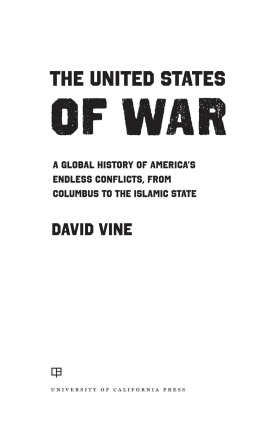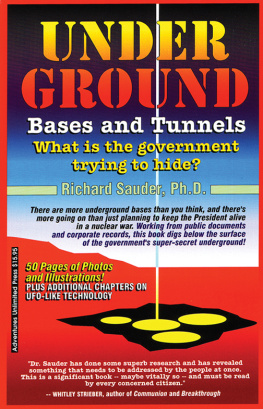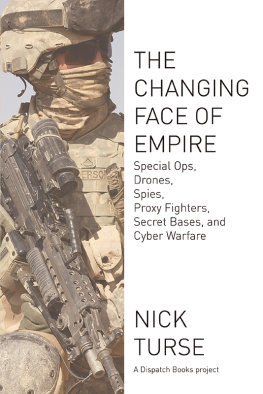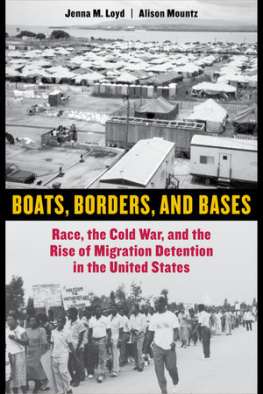Contents
Guide

The author and publisher have provided this e-book to you for your personal use only. You may not make this e-book publicly available in any way. Copyright infringement is against the law. If you believe the copy of this e-book you are reading infringes on the authors copyright, please notify the publisher at: us.macmillanusa.com/piracy.
Please note that some of the links referenced in this work are no longer active.
This book is dedicated
to the memory of my grandparents,
Tea Eichengruen Stiefel and Master Sergeant Erwin Stiefel and
Gloria Simon Vine and Lieutenant Colonel Theodore Roosevelt Vine,
and to the memory of
U.S. Army Specialist Russell E. Madden,
who died of combat injuries in Afghanistan, June 23, 2010
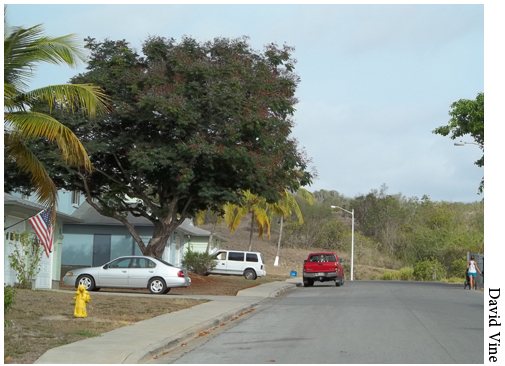
A residential neighborhood for U.S. military personnel and their families at U.S. Naval Station Guantnamo Bay, Cuba.
From a hilltop at the Guantnamo Bay naval station, you can look down on a secluded part of the base bordered by the Caribbean Sea. There youll see thick coils of razor wire, guard towers, search lights, and concrete barriers. This is the U.S. prison that has garnered so much international attention and controversy, with so many prisoners held for years without trial. But the prison facilities take up only a few acres of the forty-five-square-mile naval station. Most of the base looks nothing like the detention center. Instead, the landscape features suburban-style housing developments, a golf course, and recreational boating facilities. This part of the base has received much less attention than the prison. Yet in its own way, it is far more important for understanding who we are as a country and how we relate to the rest of the world.
What makes most of the naval station so remarkable is just how unremarkable it is. Looking out on Guantnamo Bay, a U.S. flag flies outside base headquarters. Nearby, an outdoor movie theater has a regular schedule of Hollywood blockbusters. Next door, there are bright-green artificial turf fields for football and soccer, at a new sports facility that also features two baseball diamonds, volleyball and basketball courts, and an outdoor roller-skating rink. In the air-conditioned gym, ESPNs Sportscenter plays on TV. Across the main road theres a large chapel, a post office, and a sun-bleached set of McDonalds golden arches. Neighborhoods with names like Deer Point and Villamar have looping drives and spacious lawns with barbecue grills and childrens toys. Theres a high school, a middle and elementary school, and a childcare facility. There are pools and playgrounds, several public beaches, a bowling center, barber and beauty shops, a Pizza Hut, a Taco Bell, a KFC, and a Subway.
From the hilltop you can also faintly see two nearby Cuban towns, but most everywhere else on base its easy to forget youre in Cuba. What base residents call downtown, for example, could be almost anywhere in the United Statesor at another of the hundreds of U.S. military bases spread around the globe, which often resemble self-contained American towns. The downtown is where you find the commissary and the Navys version of the post exchange, or PXthe shopping facility present on U.S. military bases worldwide. Surrounded by plentiful parking, the commissary and exchange feel like a Walmart, full of clothing and consumer electronics, furniture, automotive products, and groceries. At Guantnamo, the base souvenir shop is one of the few reminders of where you really are. There, along with U.S. Naval Station Guantnamo Bay postcards and mugs, you can buy a T-shirt bearing the words D ETAINEE O PERATIONS .
During years of debates over the closure of Guantnamo Bays prison, few have asked why the United States has such a large base on Cuban territory in the first place, and whether we should have one there at all. This is unsurprising.
Most Americans rarely think about U.S. military bases overseas. Since the end of World War II and the early days of the Cold War, when the United States built or acquired most of its overseas bases, Americans have considered it normal to have U.S. military installations in other countries, on other peoples land. The presence of our bases overseas has long been accepted unquestioningly and treated as an obvious good, essential to national security and global peace. Perhaps these bases register in our consciousness when theres an antibase protest in Okinawa or an accident in Germany. Quickly, however, theyre forgotten.
Of course, people living near U.S. bases in countries worldwide pay them more attention. For many, U.S. bases are one of the most prominent symbols of the United States, along with Hollywood movies, pop music, and fast food. Indeed, the prevalence of Burger Kings and Taco Bells on many of our bases abroad is telling: ours is a supersized collection of bases with franchises the world over. While there are no freestanding foreign bases on U.S. soil, today there are around eight hundred U.S. bases in foreign countries, occupied by hundreds of thousands of U.S. troops.
Although the United States has long had some bases in foreign lands, this massive global deployment of military force was unknown in U.S. history before World War II. Now, seventy years after that war, there are still, according to the Pentagon, 174 U.S. bases in Germany, 113 in Japan, and 83 in South Korea. There are hundreds more dotting the planet in Aruba and Australia, Bahrain and Bulgaria, Colombia, Kenya, and Qatar, to name just a few. Worldwide, we have bases in more than seventy countries. Although few U.S. citizens realize it, we probably have more bases in other peoples lands than any other people, nation, or empire in world history.
And yet the subject is barely discussed in the media. Rarely does anyone ask whether we need hundreds of bases overseas, or whether we can afford them. Rarely does anyone consider how we would feel with a foreign base on U.S. soil, or how we would react if China, Russia, or Iran built even a single base somewhere near our borders today. For most in the United States, the idea of even the nicest, most benign foreign troops arriving with their tanks, planes, and high-powered weaponry and making themselves at home in our countryoccupying and fencing off hundreds or thousands of acres of our landis unthinkable.
Rafael Correa, the president of Ecuador, highlighted this rarely considered truth in 2009 when he refused to renew the lease for a U.S. base in his country. Correa told reporters that he would approve the lease renewal on one condition: They let us put a base in Miamian Ecuadorian base.
If theres no problem having foreign soldiers on a countrys soil, Correa quipped, surely theyll let us have an Ecuadorian base in the United States.
THE SCALE
At the height of the U.S. occupations of Afghanistan and Iraq, the total number of bases, combat outposts, and checkpoints in those two countries alone topped one thousand.
While 686 is quite a figure, that tally strangely excludes many well-known U.S. bases, such as those in Kosovo, Kuwait, and Qatar. Less surprisingly, the Pentagons count also excludes secret (or secretive) American bases, such as those reported in Israel and Saudi Arabia. There are so many bases, the Pentagon itself doesnt even know the true total. By my count, eight hundred is a good estimate.


